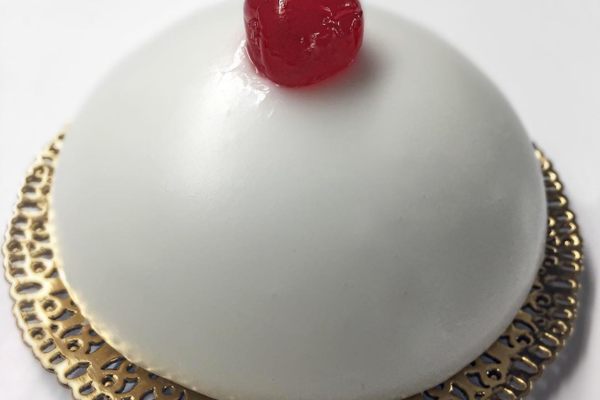Sweets
Trappist Mango Treats
At the only Trappist monastery in the Philippines, monks turn local fruit into sinfully delicious goodies.
Some of the world’s sweetest mangoes grow in the Philippines, on the tiny island of Guimaras. Its capital, Jordan, is home to Our Lady of the Philippines Trappist Abbey. In addition to running a popular guest house, the monks highlight the sweet local produce by making and selling tropical confections in their gift shop and cafe.
The Cistercian monks produce a wide array of mango-centric goodies. These include globally-familiar sweets, such as jams, cakes, and dried fruit, as well as creations that reflect the distinct history and culture of the Philippines. Spain occupied the islands from 1521 to 1898, shaping the culinary landscape in a way evidenced by many of the Trappist treats, including mango barquillos (crispy biscuit rolls) and mango biscocho (bread baked with a layer of butter and sugar on top).
Visitors can also find mango piaya, a flatbread filled with muscovado sugar (made popular one island over, in Negros Occidental) and otap, a light, brittle oval of coconut puff pastry (which originated two islands over, in Cebu). The most beloved treats sold at the gift shop, however, are likely the mango bars, which feature a butterscotch cake studded with mango chips and topped with cashew nuts. In short, if you’re visiting the monastery in search of minimalism, discipline, and restraint, avoid the gift shop.
Where to Try It
-
Our Lady of the Philippines Trappist Abbey Website
Our Lady of the Philippines Trappist Abbey , San Miguel, Jordan, 5045, Philippines
Written By
 rachelrummel
rachelrummel
Sources
- news.abs-cbn.com/life/10/15/17/from-pizza-to-beer-6-ways-to-enjoy-guimaras-mango
- www.experiencepanay.com/trappist-monastic-food-products-yellow-sweet-treats-soul/
- www.choosephilippines.com/go/heritage-sites/2392/trappist-catholic-christian-monastery-guimaras/
- panayisland.com/guimaras-jordan-trappist-monks/
- www.trappistfood.com.ph/
- thoughtstalesandwhatnot.com/2015/11/04/guimaras-our-lady-of-the-philippines-trappist-abbey-and-trappist-monastic-food-products/
- shemaegomez.com/cafe-sta-hildegarda/?fbclid=IwAR3eonAQlfknn8oz7bdiOIWzv7xA-66UPk7Xdbi-5rqQkt5ui9VNz8R8-UU













